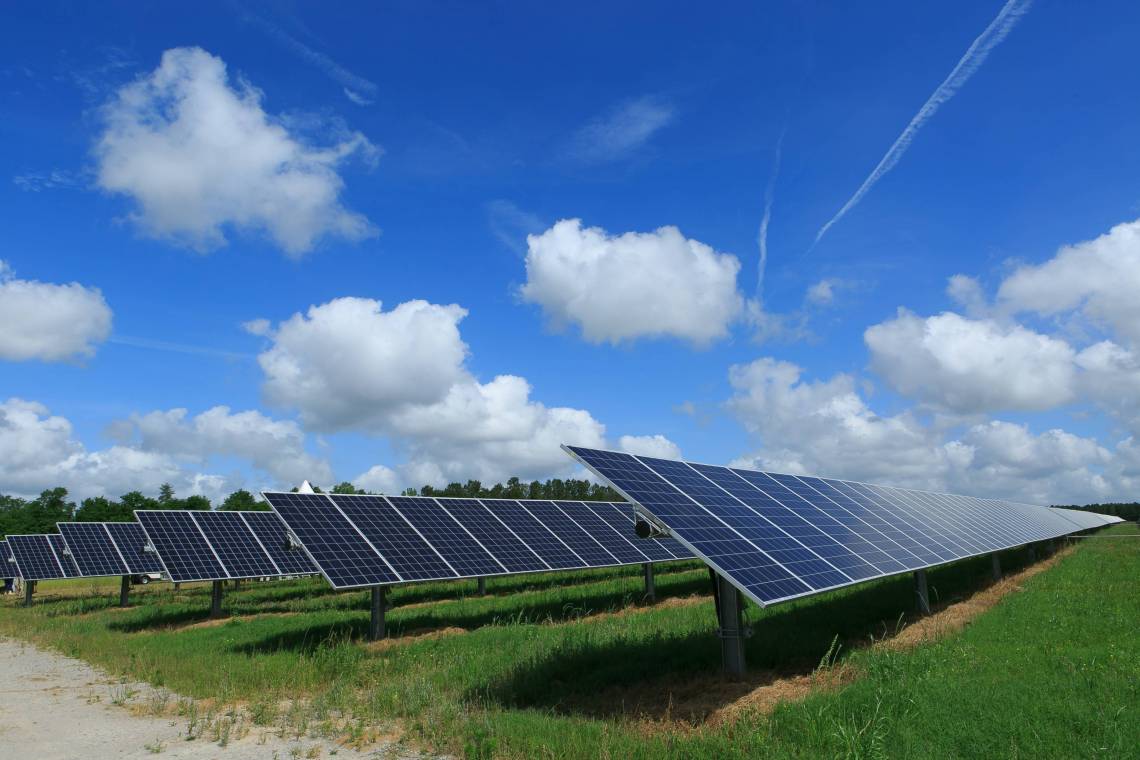Historic Solar Deal Powers Duke U. Toward Carbon Neutrality
Effort to become carbon neutral by 2024 expands solar component

DURHAM, N.C. -- Duke University’s ambitious effort to become carbon neutral by 2024 will add an expanded solar energy component through a partnership with an Asheville, North Carolina-based solar developer.
The university will bolster its renewable energy capabilities through the purchase of 101 megawatts of solar capacity from three new solar facilities planned for North Carolina starting as early as next year.
The university will partner with Pine Gate Renewables to build the new solar farms, which are expected to be online by 2022. It is the largest such initiative in North Carolina under Duke Energy’s Green Source Advantage program.
Compared to a 2007 baseline, the addition of this solar energy, when combined with existing and planned efforts, is projected to result in a 69% reduction in the university’s carbon emissions by 2022 and a 73% reduction in carbon emissions by 2024.
The partnership with Pine Gate is expected to generate 235,000-240,000 megawatt-hours (MWh) of energy each year, or about 50% of Duke’s annual electricity needs.
The expanded solar energy fits into the university’s Climate Action Plan, which was launched in 2009 and updated in 2019 with a goal of reducing on-campus emissions by 84% by 2024, with the remaining emissions reduced to zero through investment in carbon offsets.
“This partnership is a key step toward carbon neutrality,” said Duke President Vincent E. Price. “Duke is committed to building on our history of leadership in protecting the environment, a vitally important priority for our university -- and for humanity -- as we grapple with the challenges of climate change.”
The university’s plan includes a mix of transportation, outreach and emissions reduction strategies to meet the 2024 goal. This solar development agreement allows the university to access 20 times more clean energy than Duke could build on campus under current energy regulations. It is the school’s largest carbon-reduction move since eliminating the use of coal in 2011.
“We’ve been working on a large-scale solar power initiative for years, but it’s historically been impossible to do in North Carolina, given the regulatory environment,” said Tallman Trask III, Duke’s executive vice president and longtime leader of the university’s sustainability efforts. “So it’s especially gratifying to get this done now. With the increased solar capacity and the elimination of coal from the steam plant, we can likely reach Duke’s carbon neutrality goal.”
“We’re excited to partner with the forward-thinking leaders at Duke University on this project,” said Pine Gate Renewables CEO Ben Catt. “We’re looking forward to bringing renewable energy to this and other educational institutions across the country in the future.”
The new solar power arrangement comes as the university’s Board of Trustees launches a new strategic task force on climate change and environmental sustainability, envisioning further steps.
Chaired by trustee Jeff Ubben, with Nicholas School dean Toddi Steelman and Sustainable Duke director Tavey Capps as vice chairs, the task force will provide guidance to the board and administration on Duke’s current and future environmental initiatives.
The task force will also assess opportunities for Duke to expand its leadership in environmental stewardship and scholarship and identify strategic university priorities and issues that will be influenced by climate change. As with other board task forces, the members will include trustees, faculty, students and administrators.
The task force will begin its work later this summer and will provide a report to the Board of Trustees in May 2021.